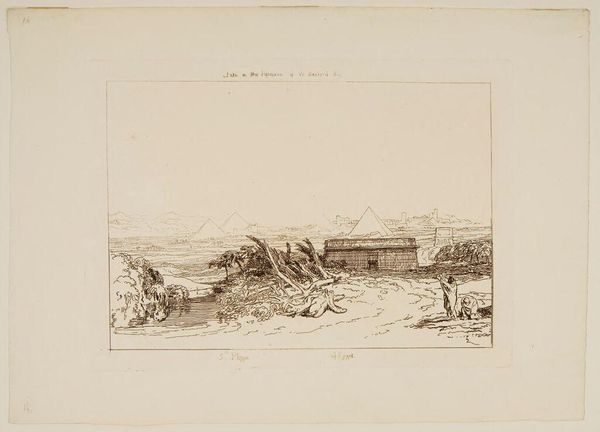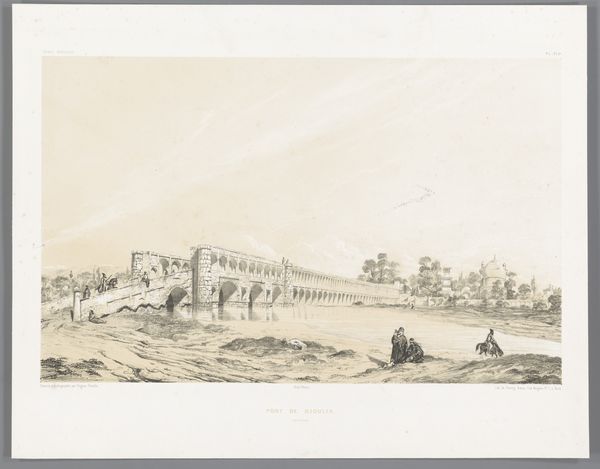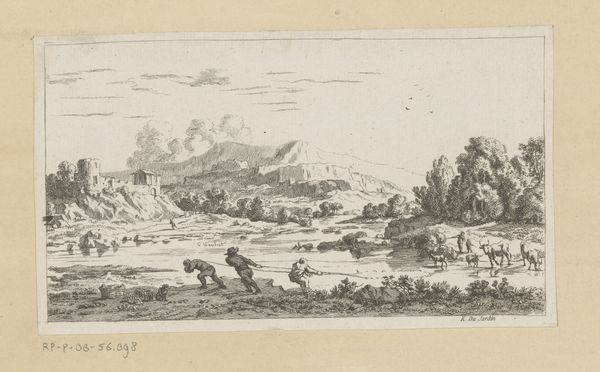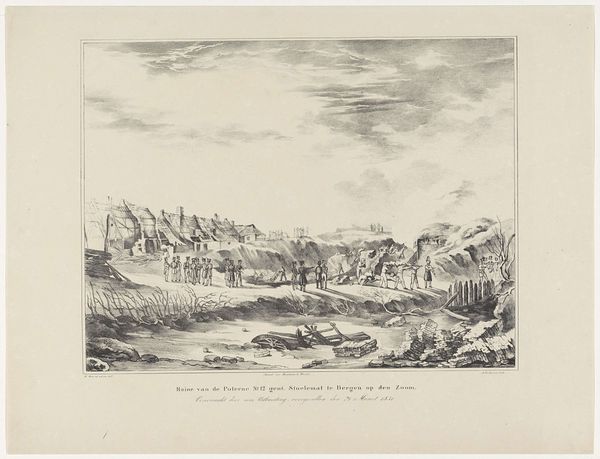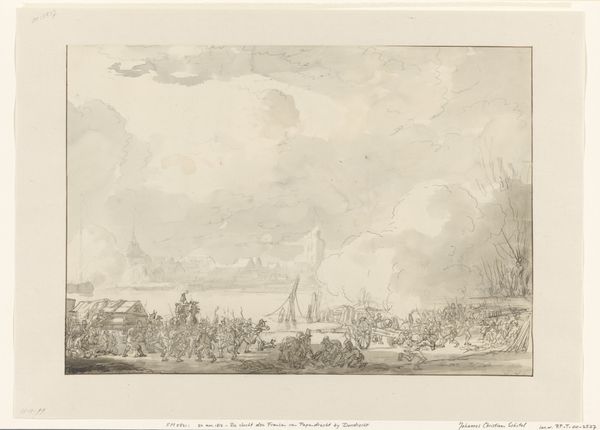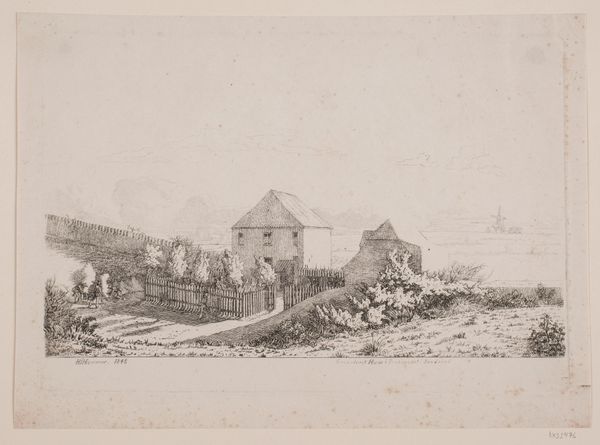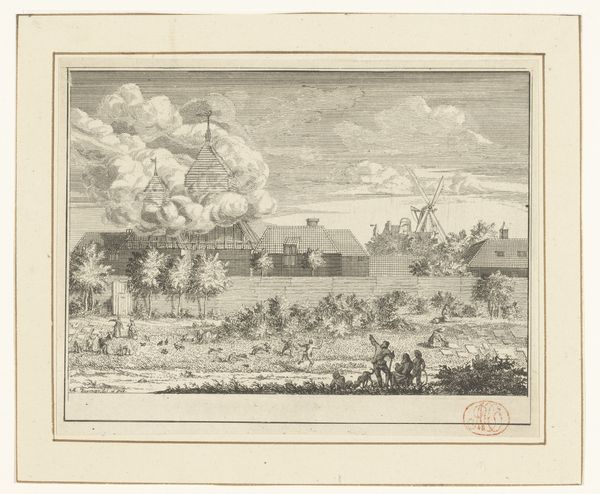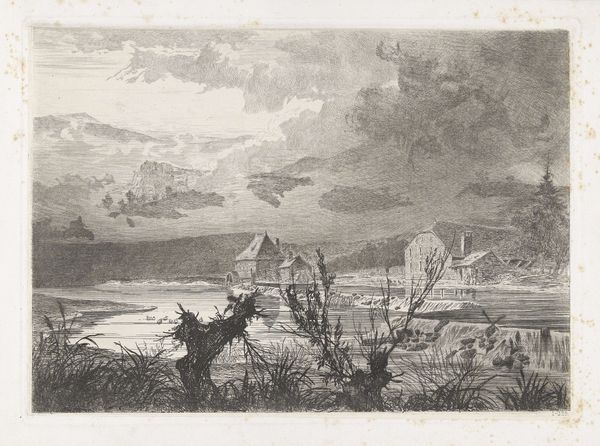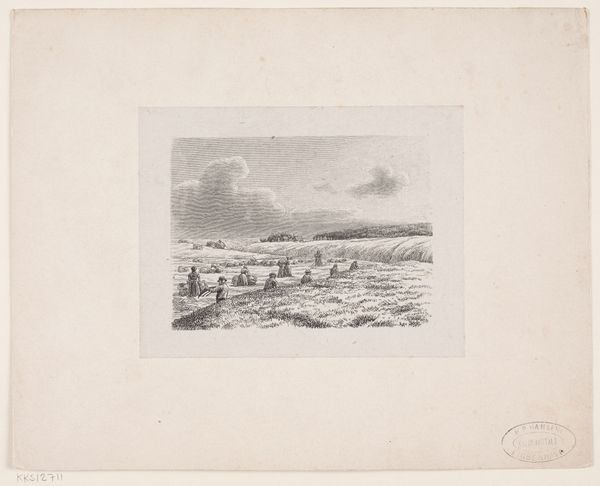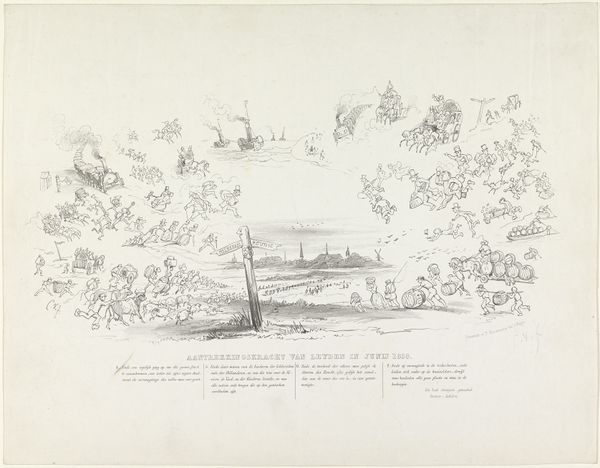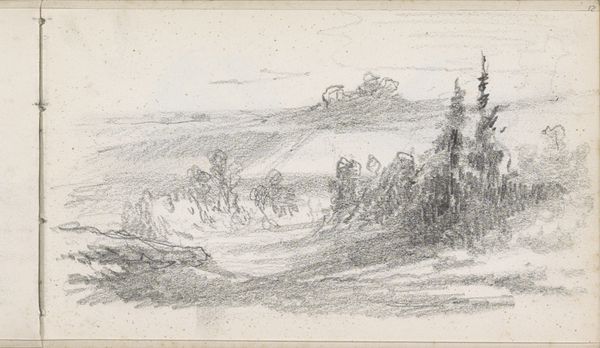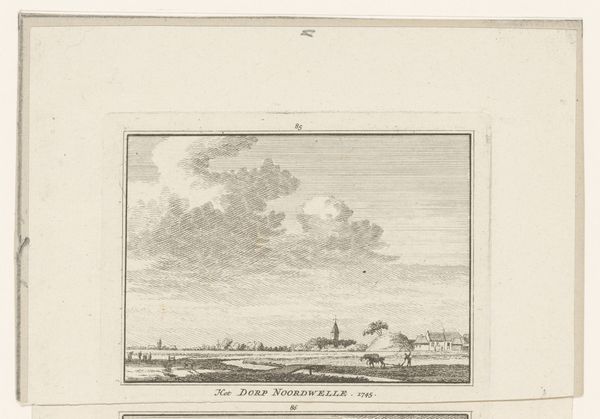
Fifth Plague of Egypt (Liber Studiorum, part III, plate 16) 1808
0:00
0:00
drawing, print, etching, engraving, architecture
#
drawing
# print
#
etching
#
landscape
#
ancient-egyptian-art
#
figuration
#
line
#
history-painting
#
engraving
#
architecture
Dimensions: plate: 7 x 10 in. (17.8 x 25.4 cm) sheet: 8 1/8 x 25 in. (20.6 x 63.5 cm)
Copyright: Public Domain
Editor: So, this is J.M.W. Turner's "Fifth Plague of Egypt," an etching and engraving from 1808, part of his Liber Studiorum series. I find the scene incredibly stark, this landscape with looming pyramids, but with what feels like death in the foreground. How do you interpret this work? Curator: Turner, in choosing this subject, wasn’t simply illustrating a biblical story; he was engaging with broader themes of power, oppression, and divine justice, and also tapping into the Orientalism prevalent during the rise of the British Empire. What does it mean to depict a culture through the lens of plague and devastation? Editor: It's a critical viewpoint. It's making me think about how narratives of suffering, particularly those tied to non-Western cultures, get consumed and potentially exploited. Is he exoticizing suffering, or making a statement about divine retribution? Curator: Both could be true, simultaneously. And perhaps a third intention lies between them. He certainly builds on and complicates established traditions of history painting. How does his use of the landscape interact with the historical narrative? What emotions do you sense in the vast emptiness versus the cluttered and close foreground? Editor: The distance feels indifferent, even majestic, while the foreground is undeniably human-sized in its misery. Maybe the plague isn't just a divine act but reveals the vulnerability of humanity. Curator: Exactly. By placing the plague within the landscape, Turner underscores how environmental and historical events disproportionately affect some while leaving untouched the structural forces, like the pyramids, standing far in the distance. Editor: I never would have seen those power dynamics within the landscape without you pointing that out. It really changes how I understand the image and its history. Curator: And seeing those dynamics can hopefully change how we interpret similar stories— both old and new.
Comments
No comments
Be the first to comment and join the conversation on the ultimate creative platform.
